#dday
Explore tagged Tumblr posts
Text





Min Yoongi, aka Suga, aka AgustD, aka Yunki, aka Yoongi Marry Me, on D-Day, The Finale
(he's so proud of himself of a successful months of teasing coming to an end with that tattoo)
1K notes
·
View notes
Text


해금 by Agust D
#bts#min yoongi#people pt2#dday#yoongi#btsedit#cyphernet#suga#mine ✦#usersky#userhobeah#tuserjay#userjeonqquk#jhsdaily#jhsedit#userjeonjcngkook#yoongi gifs#bts gifs#raplinegifs#annietrack#usertaeyungie#trackofthesoul#userjoonie#hyunglinenetwork#bangtaned#bts yoongi#bts suga
6K notes
·
View notes
Text

sketching
#i’m sure you’ve seen this before#band of brothers#world war 2#world war ii#wwii#ww2#paratroopers#parachute infantry#us army#normandy landings#dday#cirr0stratus art#band of brothers hbo#band of brothers#traditional drawing
224 notes
·
View notes
Text

On June 5, 1944, two members of the ‘Filthy Thirteen’ with the 101st Airborne Division, Clarence Ware applies war paint to Charles Plauda, before jumping into Normandy.
The Filthy Thirteen was the name given to the 1st Demolition Section of the Regimental Headquarters Company of the 506th Parachute Infantry Regiment, 101st Airborne Division. They were ordered to secure or destroy the bridges over the Douve River during the Normandy Invasion of Europe in June 1944. Half were either killed, wounded or captured, but they accomplished their mission.
This unit was best known for the famous photo which appeared in Stars and Stripes, showing two members wearing Indian-style “mohawks” and applying war paint to one another. The inspiration for this came from unit sergeant Jake McNiece, who was part Choctaw.
#filthy thirteen#101st airborne#us army#world war 2#wwii#dday#operation overlord#normandy#military#history
743 notes
·
View notes
Text

US soldiers take cover by some cliffs after managing to get a foothold on Omaha Beach - D-day, Normandy, 6th June 1944
#world war two#ww2#1940s#worldwar2photos#history#wwii#ww2 history#world war 2#1944#wwii era#ww2history#dday#dday landings#normandy landings#normandy#normandie#june 6 1944#omaha#beach#Omaha beach
176 notes
·
View notes
Text
General Dwight D. Eisenhower’s original "D-day Statement to Soldiers, Sailors, and Airmen of the Allied Expeditionary Force.”

General Dwight D. Eisenhower’s original "D-day Statement to Soldiers, Sailors, and Airmen of the Allied Expeditionary Force.”
The National Archives holds a multitude of records related to #DDay and its surrounding events:
425 notes
·
View notes
Text

A VERY HAPPY BDAY TO OUR LORD AND SAVIOR!!!
Jeffrey Combs
#not sure what i'd be doing if my brain didnt decide to fixate on him for the last two years#plus the Combs community is such a nice place trully the best fandom on tumblr#jeffrey combs#reanimator#birthday#i love him so much#in a sane way of coarse#fortress 1992#lurking fear 1994#doc haggis#would you rather#shepard lambrick#ds9#weyoun#from beyond#doctor mordrid#dino bob#love and a 45#chaz#dead man walking 1988#dday
210 notes
·
View notes
Photo



AGUST D : HAEGEUM (解禁) POSTER SET 3 ⤷ 23.04.21 1PM KST | ig ; twt (click for hi-res)
#and the third set is here!#bts#bangtan#btsgfx#agust d#yoongi#suga#dday#dailybts#userbangtan#usersky#annietrack#trackofthesoul#*latest#*gfx#*posters#whewwww the first one took awhile#but i think i like the result#i think i'm slowly figuring a new-ish style out#dailydaegu
2K notes
·
View notes
Text

source - https://twitter.com/poppypride1
346 notes
·
View notes
Photo

click-clack to the bang (bang), f* you and you
#gif#myg#min yoongi#yoongi#yoongi gif#suga#suga gif#bts suga#btsgif#btsedit#dailydaegu#bangtanarmynet#armysource#hyunglinenetwork#userbangtan#agust d#dday#d1#best tour ever#cypher pt 4#cypher 4
1K notes
·
View notes
Text
same image


64 notes
·
View notes
Text




#bts#min yoongi#yoongi#yoongi au#gumiho!yoongi#dday#agust d#suga#bts suga#fun fact about those vcr that i didn't notice until i started editing them#there's a slowmotion constantly happening#making seem like yoongi is always out of place and often has multiples of him#frame by frame you actually really see multiple him coming in and out of focus#it's crazy how well it fits with the dday narrative
1K notes
·
View notes
Text

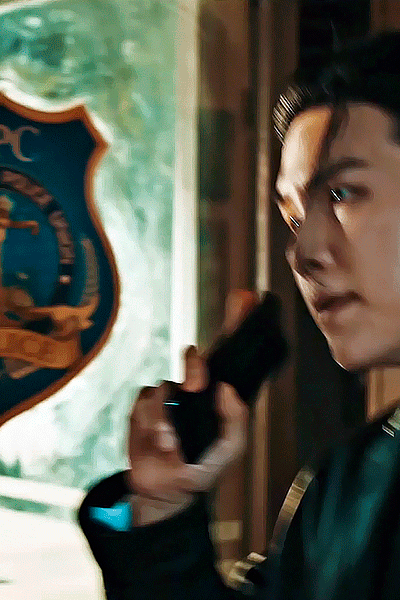


if i speak i'm in big trouble
#bts#min yoongi#people pt2#dday#yoongi#btsedit#cyphernet#suga#mine ✦#usersky#userhobeah#tuserjay#userjeonqquk#jhsdaily#jhsedit#userjeonjcngkook#yoongi gifs#bts gifs#raplinegifs#annietrack#usertaeyungie#trackofthesoul#userjoonie#hyunglinenetwork#bangtaned#bts yoongi#bts suga
2K notes
·
View notes
Text
D-Day was 80 years ago today!
D-Day was the first day of Operation Overlord, the Allied attack on German-occupied Western Europe, which began on the beaches of Normandy, France, on 6 June 1944. Primarily US, British, and Canadian troops, with naval and air support, attacked five beaches, landing some 135,000 men in a day widely considered to have changed history.
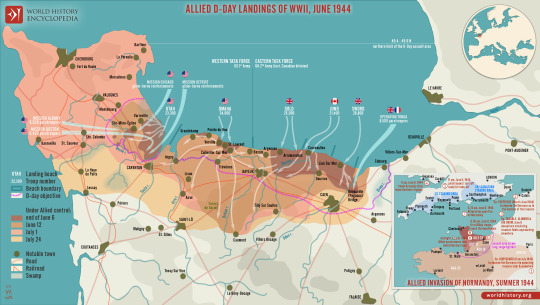
Where to Attack?
Operation Overlord, which sought to attack occupied Europe starting with an amphibious landing in northwest France, Belgium, or the Netherlands, had been in the planning since January 1943 when Allied leaders agreed to the build-up of British and US troops in Britain. The Allies were unsure where exactly to land, but the requirements were simple: as short a sea crossing as possible and within range of Allied fighter cover. A third requirement was to have a major port nearby, which could be captured and used to land further troops and equipment. The best fit seemed to be Normandy with its flat beaches and port of Cherbourg.
The Atlantic Wall
The leader of Nazi Germany, Adolf Hitler (1889-1945), called his western line of defences the Atlantic Wall. It had gaps but presented an impressive string of fortifications along the coast from Spain to the Netherlands. Construction of gun batteries, bunker networks, and observation posts began as early as 1942.
Many of the German divisions were not crack troops but inexperienced soldiers, who were spending more time building defences than in vital military training. There was a woeful lack of materials for Hitler's dream of the Atlantic Wall, really something of a Swiss cheese, with some strong areas, but many holes. The German army was not provided with sufficient mines, explosives, concrete, or labourers to better protect the coastline. At least one-third of gun positions still had no casement protection. Many installations were not bomb-proof. Another serious weakness was naval and air support. The navy had a mere 4 destroyers available and 39 E-boats while the Luftwaffe's (German Air Force's) contribution was equally paltry with only 319 planes operating in the skies when the invasion took place (rising to 1,000) in the second week.
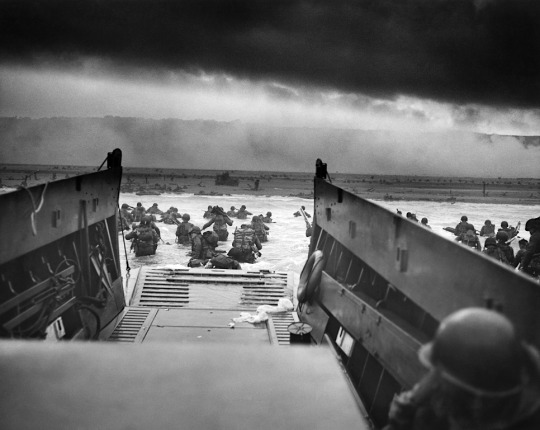
Neptune to Normandy
Preparation for Overlord occurred right through April and May of 1940 when the Royal Air Force (RAF) and United States Air Force (USAAF) relentlessly bombed communications and transportation systems in France as well as coastal defences, airfields, industrial targets, and military installations. In total, over 200,000 missions were conducted to weaken as much as possible the Nazi defences ready for the infantry troops about to be involved in the largest troop movement in history. The French Resistance also played their part in preparing the way by blowing up train lines and communication systems that would ensure the defenders could not effectively respond to the invasion.
The Allied fleet of 7,000 vessels of all kinds departed from English south-coast ports such as Falmouth, Plymouth, Poole, Portsmouth, Newhaven, and Harwich. In an operation code-named Neptune, the ships gathered off Portsmouth in a zone called 'Piccadilly Circus' after the busy London road junction, and then made their way to Normandy and the assault areas. At the same time, gliders and planes flew to the Cherbourg peninsula in the west and Ouistreham on the eastern edge of the planned landing. Paratroopers of the 82nd and 101st US Airborne Division attacked in the west to try and cut off Cherbourg. At the eastern extremity of the operation, paratroopers of the 6th British Airborne Division aimed to secure Pegasus Bridge over the Caen Canal. Other tasks of the paratrooper and glider units were to destroy bridges to impede the enemy, hold others necessary for the invasion to progress, destroy gun emplacements, secure the beach exits, and protect the invasion's flanks.
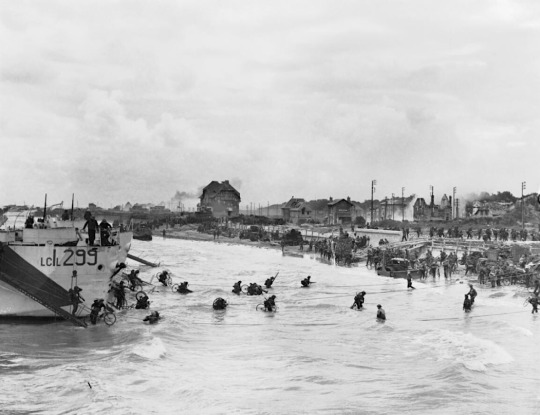
The Beaches
The amphibious attack was set for dawn on 5 June, daylight being a requirement for the necessary air and naval support. Bad weather led to a postponement of 24 hours. Shortly after midnight, the first waves of 23,000 British and American paratroopers landed in France. US paratroopers who dropped near Ste-Mère-Église ensured this was the first French town to be liberated. From 3.00 a.m., air and naval bombardment of the Normandy coast began, letting up just 15 minutes before the first infantry troops landed on the beaches at 6.30 a.m.
The beaches selected for the landings were divided into zones, each given a code name. US troops attacked two, the British army another two, and the Canadian force the fifth. These beaches and the troops assigned to them were (west to east):
Utah Beach - 4th US Infantry Division, 7th US Corps (1st US Army commanded by Lieutenant General Omar N. Bradley)
Omaha Beach - 1st US Infantry Division, 5th US Corps (1st US Army)
Gold Beach - 50th British Infantry Division, 30th British Corps (2nd British Army commanded by Lieutenant-General Miles C. Dempsey)
Juno Beach - 3rd Canadian Infantry Division (2nd British Army)
Sword Beach - 3rd British Infantry Division, 1st British Corps (2nd British Army)
In addition, the 2nd US Rangers were to attack the well-defended Pointe du Hoc between Utah and Omaha (although it turned out the guns had never been installed there), while Royal Marine Commando units attacked targets on Gold, Juno, and Sword.
The RAF and USAAF continued to protect the invasion fleet and ensure any enemy ground-based counterattack faced air attack. As the Allies could put in the air 12,000 aircraft at this stage, the Luftwaffe's aerial fightback was pitifully inadequate. On D-Day alone, the Allied air forces flew 15,000 sorties compared to the Luftwaffe's 100. Not one single Allied aircraft was lost to enemy fire on D-Day.
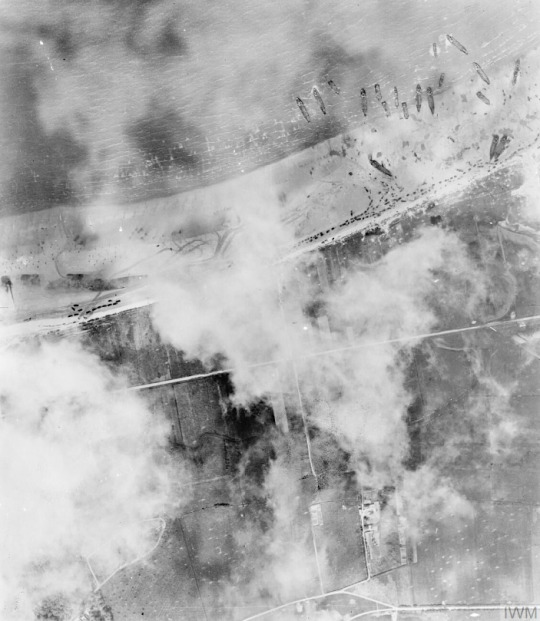
Packing Normandy
By the end of D-Day, 135,000 men had been landed and relatively few casualties were sustained – some 5,000 men. There were some serious cock-ups, notably the hopeless dispersal of the paratroopers (only 4% of the US 101st Air Division were dropped at the intended target zone), but, if anything, this caused even more confusion amongst the German commanders on the ground as it seemed the Allies were attacking everywhere. The defenders, overcoming the initial handicap that many area commanders were at a strategy conference in Rennes, did eventually organise themselves into a counterattack, deploying their reserves and pulling in troops from other parts of France. This is when French resistance and aerial bombing became crucial, seriously hampering the German army's effort to reinforce the coastal areas of Normandy. The German field commanders wanted to withdraw, regroup and attack in force, but, on 11 June, Hitler ordered there be no retreat.
All of the original invasion beaches were linked as the Allies pushed inland. To aid thousands more troops following up the initial attack, two artificial floating harbours were built. Code-named Mulberries, these were located off Omaha and Gold beaches and were built from 200 prefabricated units. A storm hit on 20 June, destroying the Mulberry Harbour off Omaha, but the one at Gold was still serviceable, allowing some 11,000 tons of material to be landed every 24 hours. The other problem for the Allies was how to supply thousands of vehicles with the fuel they needed. The short-term solution, code-named Tombola, was to have tanker ships pump fuel to storage tanks on shore, using buoyed pipelines. The longer-term solution was code-named Pluto (Pipeline Under the Ocean), a pipeline under the Channel to Cherbourg through which fuel could be pumped. Cherbourg was taken on 27 June and was used to ship in more troops and supplies, although the defenders had sunk ships to block the harbour and these took some six weeks to fully clear.
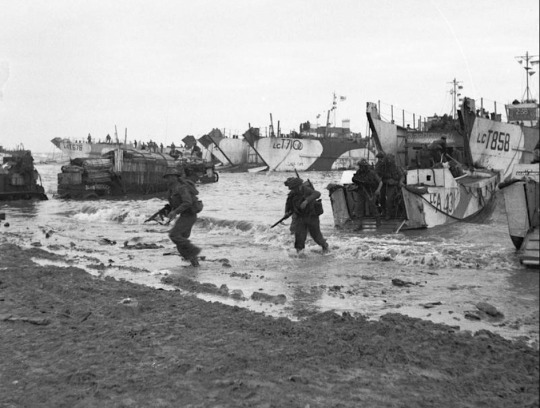
Operation Neptune officially ended on 30 June. Around 850,000 men, 148,800 vehicles, and 570,000 tons of stores and equipment had been landed since D-Day. The next phase of Overlord was to push the occupiers out of Normandy. The defenders were not only having logistical problems but also command issues as Hitler replaced Rundstedt with Field Marshal Günther von Kluge (1882-1944) and formally warned Rommel not to be defeatist.
Aftermath: The Normandy Campaign
By early July, the Allies, having not got further south than around 20 miles (32 km) from the coast, were behind schedule. Poor weather was limiting the role of aircraft in the advance. The German forces were using the countryside well to slow the Allied advance – countless small fields enclosed with trees and hedgerows which limited visibility and made tanks vulnerable to ambush. Caen was staunchly defended and required Allied bombers to obliterate the city on 7 July. The German troops withdrew but still held one-half of the city. The Allies lost around 500 tanks trying to take Caen, vital to any push further south. The advance to Avranches was equally tortuous, and 40,000 men were lost in two weeks of heavy fighting. By the end of July, the Allies had taken Caen, Avranches, and the vital bridge at Pontaubault. From 1 August, Patton and the US Third Army were punching south at the western side of the offensive, and the Brittany ports of St. Malo, Brest, and Lorient were taken.

German forces counterattacked to try and retake Avranches, but Allied air power was decisive. Through August 1940, the Allies swept southwards to the Loire River from St. Nazaire to Orléans. On 15 August, a major landing took place on the southwest coast of France (French Riviera landings) and Marseille was captured on 28 August. In northern France, the Allies captured enough territory, ports, and airfields for a massive increase in material support. On 25 August, Paris was liberated. By mid-September, the Allied troops in the north and south of France had linked up and the campaign front expanded eastwards pushing on to the borders of Germany. There would be setbacks like Operation Market Garden of September and a brief fightback at the Battle of the Bulge in December 1944, but the direction of the war and ultimate Allied victory was now a question of not if but when.
138 notes
·
View notes
Text

Second Lieutenant Walter Sidlowski kneels over the blanket covered body of an American soldier he had just helped rescue from the surf off Omaha Beach. Exhausted, Sidlowski appears motionless. His dripping wet uniform hugged by an inflated life belt, his face tortured and staring as though he is looking at someone but can’t find the words to speak.
Behind him the scene carries on, other men work to treat those that were saved while waves churn the waters of the English Channel beneath a vast invasion armada. Yet Sidlowski is still, caught in the moment by US Army Signal Corps photographer Walter Rosenblum in one of the most famous images of D-Day.
This image quickly became one of the most iconic of D-Day, used and reproduced by the thousands to represent the titanic struggle that started on the beaches of Northern France on June 6. The only complication to this representation is this photo was taken on June 7, D+1.
(Photo by: Walter Rosenblum/USA)
440 notes
·
View notes
Text
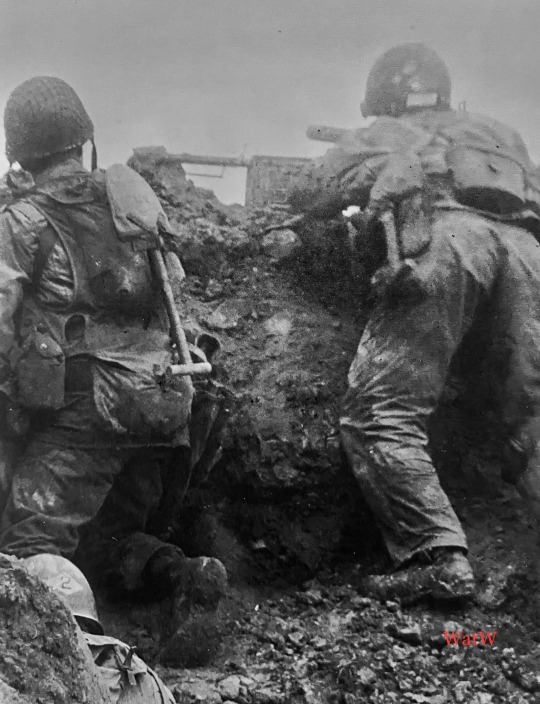
US soldiers give cover on Omaha beach - 6th June 1944
#world war two#ww2#worldwar2photos#history#1940s#ww2 history#wwii#world war 2#wwii era#ww2history#normandie#normandy landings#normandy#1944#dday#Omaha#omaha beach
581 notes
·
View notes